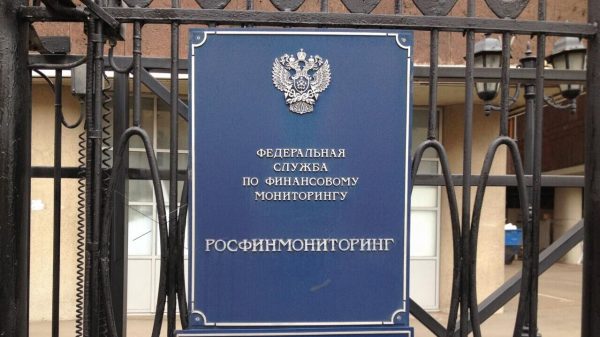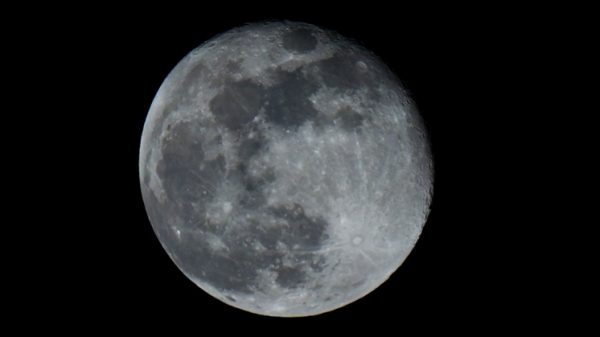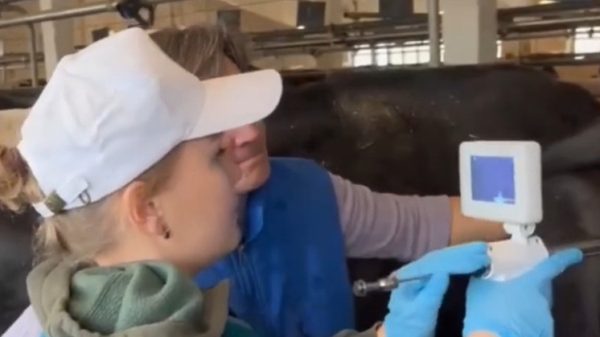How climate-friendly fertilizer is mined
More than 1 km beneath the North Sea lies a mineral that could help feed the world. Polyhalite is similar to thick, crumbly shale and is composed of potassium, magnesium, calcium and sulfur. All these minerals nourish agricultural crops, especially potatoes, vegetables and fruits.

“What lies 1,000 meters below the North Sea can affect the climate of the atmosphere above it. And I'm coming down to see it, – says Sky News journalist Tom Heap. – The lift thunders down at 10 meters per second, the speed of a sprinter, whipping up the air and flapping my shorts as it descends. Yes, shorts. I wear a lot of PPE at my job, but this is the first time I've worn beachwear complete with bright orange shin pads. This is necessary because one of the dangers miners face is heat.
Being so far down, you are closer to the Earth's core, so the temperature rises to 40°C. All workers carry liters of water or special liquids with them for hydration.
“My guide,” Tom Heap continues his story, – Richard Severn, operations manager at ICL Boulby mine in the North York Moors. The fall is not the end of the journey, we still need to move forward. It’s about a 40-minute drive to the place where the guys work, about 7 km — we’ll go under the bottom of the North Sea… but you won’t see any fish… Otherwise it would mean that something has gone wrong.”
“As we approach the face, huge mining machines and garbage trucks roar past, as if they were brought straight from the set of the movie Aliens, “ continues the journalist. – Finally we get to the face and see a mining machine. At its front is a rotating drum with steel teeth and a tungsten tip, which is controlled by a man standing 20 meters behind with what looks like a complex game controller. He keeps his distance to keep them from falling into a gas pit that could explode and bury anything too close.
Hundreds of miners descend here every day to mine a mineral called polyhalite. It is dark gray and layered, like thick crumbly shale, and is composed of potassium, magnesium, calcium and sulfur.
All these minerals nourish crops, especially potatoes, vegetables and fruits. They hope to replace potash, which requires much more energy and chemicals to process.
Richard Severn says: “Polyhalite is a high-nutrient fertilizer that requires very little processing. We simply extract it, grind it, sift it, scatter it across the field, and that’s it. Because this is a fairly energy efficient process, we use approximately 85% less carbon than comparable fertilizers.»
The production and use of fertilizers is a major contributor to global warming—about 5% of greenhouse gas emissions come from cement and steel. In chemical fertilizers, nitrogen is a major driver of climate change, and although polyhalite does not contain nitrogen, it works in the soil to allow plants to use it more efficiently.
"It helps roots take up nitrogen. So you have to effectively distribute less nitrogen throughout the crop,” Severn added.
Once at the surface, the polyhalite crushed stone is crushed into granules of various sizes and then loaded onto rail cars bound for Teesport and shipped around the world.
This British resource is virtually limitless as it lies beneath much of the North Sea and beyond. But unfortunately, the easiest access is in the center of the National Park, making some locals and planners very wary of large industrial developments and the associated truck traffic, says Tom Heap.
That turned out to be the case. not enough to dissuade another mining giant, Anglo American, from investing billions of pounds in the new Woodsmith mine deep within the park. They are reducing the impact on the local landscape by digging a 23-mile tunnel — the longest in Britain — to Teesport to take all the minerals from the mine. Some observers view both projects as major financial gambles, given high fertilizer prices and farmers' wariness about introducing new products.
But Catherine Bartlett, a soil scientist working for Anglo American, says polyhalite's time has come: " We need more food on less land, and at the same time we need to reduce carbon emissions. So agriculture has to undergo some changes. We believe that polyhalite is one of the potential solutions to the changes needed.»


























































Свежие комментарии